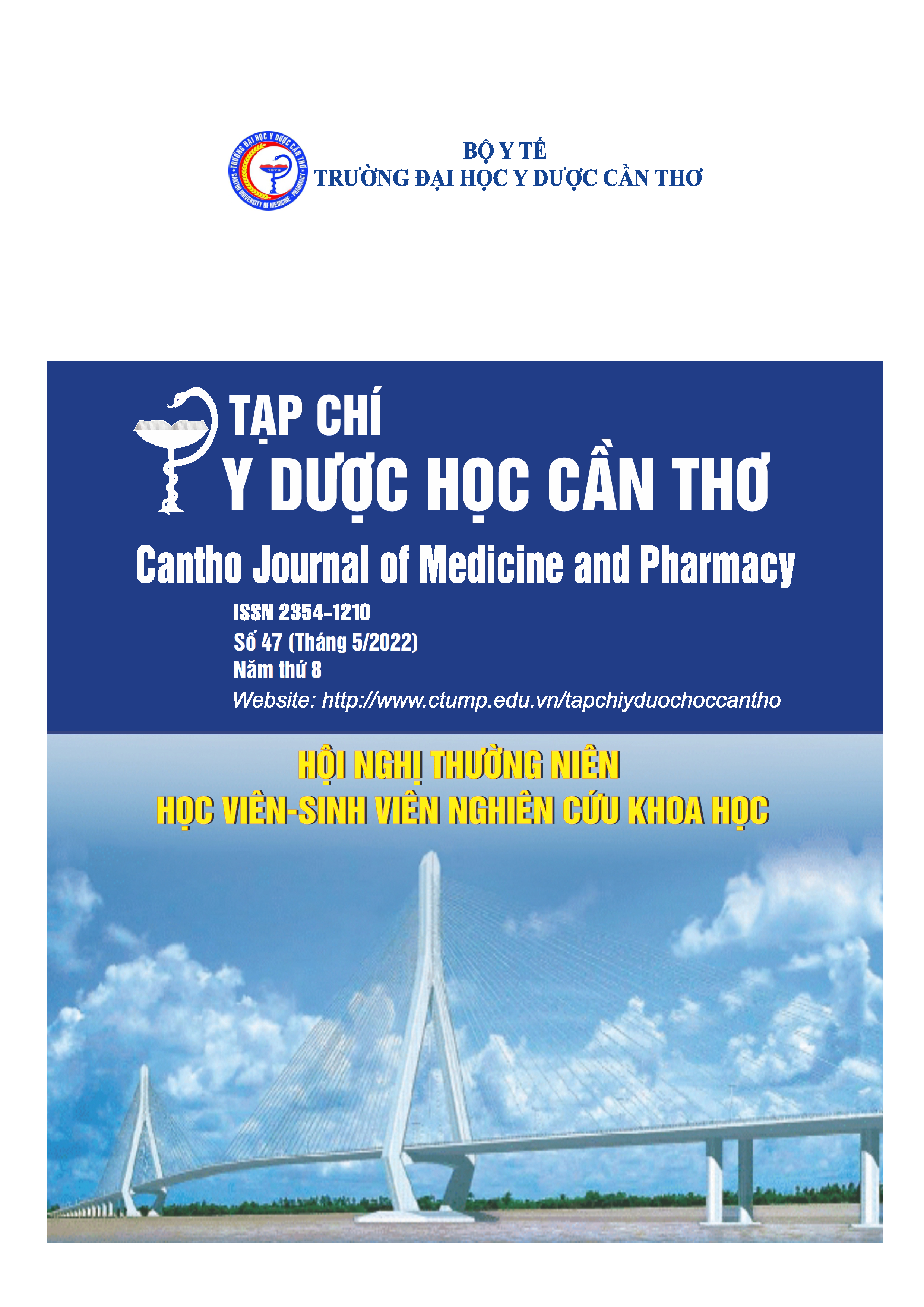The survey of antibiotic resistance of the bacteria that cause infections isolated at Can Tho University Medicine and Pharmacy Hospital in 2021
Main Article Content
Abstract
Background: The rate of antibiotic resistant bacteria increases dramatically, therefore choosing antibiotics for treatment of bacterial infections is more and more difficult. Objectives: 1).
To identify the bacterial agents which caused infectious diseases isolated from patient samples and some related factors; 2). To describe the antibiotic resistance of isolated bacteria. Materials and methods: 627 bacterial strains were isolated and identified. Antimicrobial susceptibility testing were done by MicroScan. Results: The predominance of isolated bacteria is S. aureus (22.8%).
Other isolated bacteria are Staphylococcus spp. (17.4%), S. pneumoniae (16.2%), Klebsiella spp. (11.9%) and E. coli (9.7%). The resistance of S. aureus are high level with erythromycin (71.6%), clindamycin (78.7%), gentamycin (50.3%); S. aureus resistant to vancomycin are (10.4%). The resistance of Staphylococcus sp are low level with erythromycin (67.0%), clindamycin (57.5%), levofloxacin (50.5%). High level resistance of S. pneumonia is erythromycin (84.2%). High level resistance of E. coli are aztreonam (81.7%), piperacillin and levofloxacin (78.7%). High level resistance of Klebsiella spp. is piperacillin (83.8%). High level resistance of Pseudomonas spp. are ciprofloxacin (38.1%), piperacillin (38.6%) và levofloxacin (40.0%). Conclusions: S. aureus accounted for the highest percentage with 22.8%, bacterial strains with multi-antibiotic resistance accounted for a high rate.
Article Details
Keywords
Antibiotic, resistance
References
2. Bộ Y tế (2016), Phòng chống kháng thuốc, http://amr.moh.gov.vn/.
3. Phan Quốc Hoàn, Nguyễn Kim Phương và cộng sự (2011), Kháng kháng sinh của các chủng vi khuẩn gây bệnh tại Bệnh viện Trung ương Quân đội 108, Tạp chí Y Dược lâm sàng 108, tập 6 (số đặc biệt tháng 3), tr.482-490.
4. Bùi Đức Long (2013), Tình hình kháng kháng sinh tại Bệnh viện Đa khoa Hải Dương năm 2012, Y học Việt Nam, 402(1), pp.80-85.
5. Nguyễn Vĩnh Nghi (2017), Tình hình kháng kháng sinh của các dòng vi khuẩn thường gặp tại Bệnh viện Ninh Thuận năm 2017, Thời sự Y học 12/2017, tr.40-46.
6. Quách Võ Bích Thuận (2015), Khảo sát sự đề kháng kháng sinh của các vi khuẩn gây nhiễm khuẩn được phân lập tại bệnh viện Trường Đại học Y Dược Cần Thơ năm 2013-2014, Tạp chí Đại học Y Duợc Cần Thơ, 2015.
7. Nguyễn Sử Minh Tuyết, Vũ Thị Hải Châu, Trương Anh Dũng, Lê Thị Tuyết Nga (2009), Khảo sát vi khuẩn gây nhiễm trùng bệnh viện tại Bệnh Viện Nhân Dân Gia Định, tạp chí Y học Thành phố Hồ Chí Minh, số 13, tr.295-300.
8. Kot B., Wierzchowska K., Piechota M., et al. (2020), Antimicrobial Resistance Patterns in Methicillin-Resistant Staphylococcus aureus from Patients Hospitalized during 2015-2017 in Hospitals in Poland, Med Princ Pract, 29(1), pp.61-68.
9. Masaisa Florence, Kayigi Etienne, Seni Jeremiah (2018), Antibiotic resistance patterns and molecular characterization of methicillin-resistant Staphylococcus aureus in clinical settings in
Rwanda, The American journal of tropical medicine and hygiene, 99(5), pp.1239.


